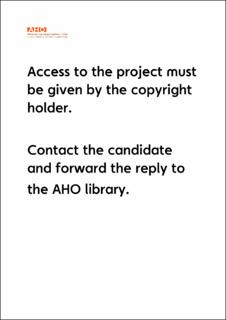Oslo`s Urban Canvas : strategic transformation for abandoned spaces
Master thesis
Submitted version

Permanent lenke
https://hdl.handle.net/11250/3120254Utgivelsesdato
2023-12Metadata
Vis full innførselSamlinger
Beskrivelse
Oslo municipality own 198 abandoned buildings, adding up to 140 000 square meters, spread across the city. The majority of the buildings have been abandoned for a number of years, and have an uncertain future.
This project establishes a framework for the revitalization of abandoned buildings owned by Oslo municipality, focusing on the strategic transformation from temporary activations to permanent community developments, grounded in the urgent need for sustainable urban regeneration.
The research delves into understanding the characteristics and inherent possibilities of these buildings, shifting the narrative from obsolescence to opportunity. The project´s foundation lies in the hypothesis that temporary, community-focused interventions can act as catalysts, sparking a transition towards long-term, sustainable redevelopment that resonates with the social, cultural and environmental need of the city.
The methodology adopted is multi-scaled and dynamic, beginning with a city-wide analysis of the abandoned buildings, followed by a focused exploration at neighborhood and individual building levels, and then choosing three buildings as case studies to test out the different strategies. The research on all of the buildings is compiled into a book incorporated in ”binder 2”. A key aspect of the project is the ”temporary-to-permanent” strategy. This involves initiating with low-cost, flexible temporary uses for the abandoned buildings, such as pop-up cultural events or community workshops. These temporary interventions serve as platforms for testing ideas, engaging the community and assessing viability, paving the way for more permanent, substantial redevelopment plans. The approach underscores the importance of flexibility and responsiveness, allowing the project to evolve organically based on real-time feedback and changing urban dynamics.